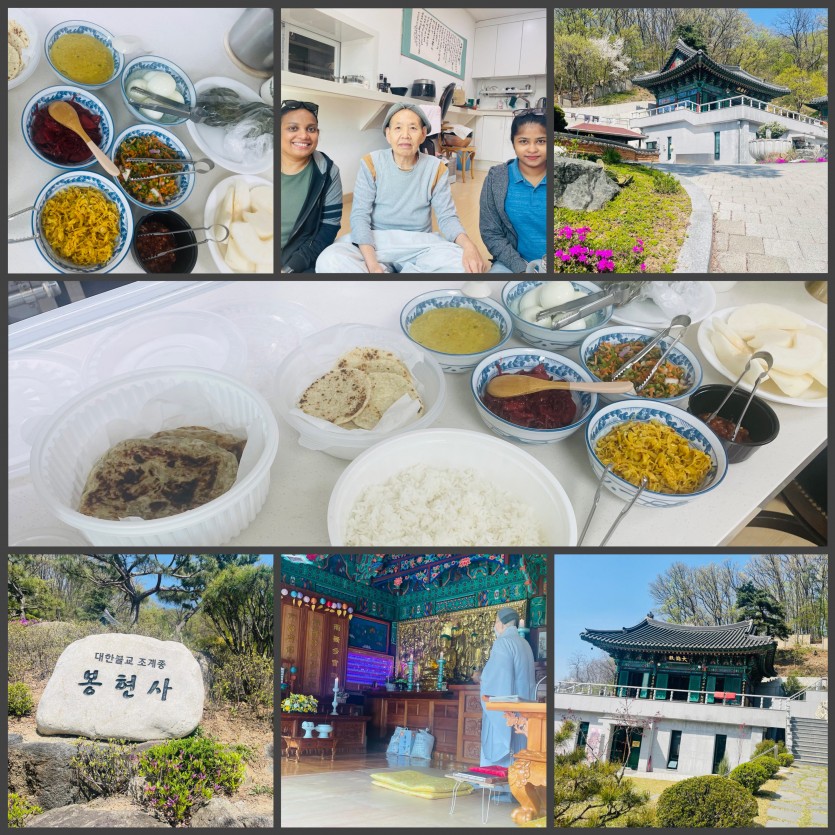Language & Culture Almsgiving experience in South Korea!
페이지 정보

본문
Hello friends,
In honor of the birthday of our Lord Buddha, I'm writing today to share my experience paying alms in a Korean temple on May 7. We went to the Bonghyeonsa temple and gave our traditional Sri Lankan meals of rice and curry (rice with beetroot curry, dhal curry, cabbage curry, and mixed vegetable salad along with eggs), coconut roti with chili sambol, and some parathas to two monks who were present there. They really enjoyed our food, so I thought I'd let you know and note the variations in almsgiving between our two nations.
Buddhist almsgiving, also known as "dana," holds significant cultural and religious importance in both Sri Lanka and South Korea. While both countries share a common Buddhist heritage, there are some notable differences in the practice of almsgiving between the two nations.
In Sri Lanka, almsgiving is deeply ingrained in the religious and social fabric of the country. It is commonly referred to as "pindapata" and involves the offering of food and other necessities to Buddhist monks. The act of almsgiving is seen as a way to accrue merit and generate good karma. It is typically carried out by laypeople who wake up early in the morning to prepare food and visit nearby temples or monasteries to offer their donations. We, Sri Lankan almsgivers often follow a specific ritual, presenting the food with both hands while bowing and receiving blessings from the monks in return.
In South Korea, almsgiving is known as "bunhwangje" or "seonbul," and it also plays a significant role in Buddhist practice. However, the manner in which almsgiving is conducted in South Korea differs from Sri Lanka. Instead of offering food, Korean Buddhists commonly provide monetary donations to temples or monasteries. These donations contribute to the maintenance and support of the Buddhist community. Unlike the direct interaction between donors and monks during almsgiving in Sri Lanka, the act of giving in South Korea is often done anonymously, without personal interaction or receiving blessings directly from the monks.
Additionally, the scale and frequency of almsgiving may vary between Sri Lanka and South Korea. In Sri Lanka, almsgiving is a regular practice and often takes place daily or on auspicious occasions, such as full moon days. It is also common for us to sponsor and organize large-scale alms-giving events known as "dansal," where food is distributed to the public. In South Korea, almsgiving tends to be more sporadic and may occur during specific Buddhist holidays or when individuals feel the need to make a donation.
Despite these differences, the underlying principles of generosity, compassion, and the desire to support the monastic community remain central to almsgiving in both Sri Lanka and South Korea. It serves as a way for laypeople to express devotion to their faith, cultivate virtue, and contribute to the well-being of the Buddhist community. The practice of almsgiving continues to play an integral role in preserving and sustaining Buddhist traditions and values in both countries.
- PrevPreserving Tradition: Clothing as an Identity 23.05.29
- NextAt Yongsan Electronic Market, where I shopped, I acquired a brand-new mirrorless camera. 23.05.21
댓글목록
There are no registered comments.

